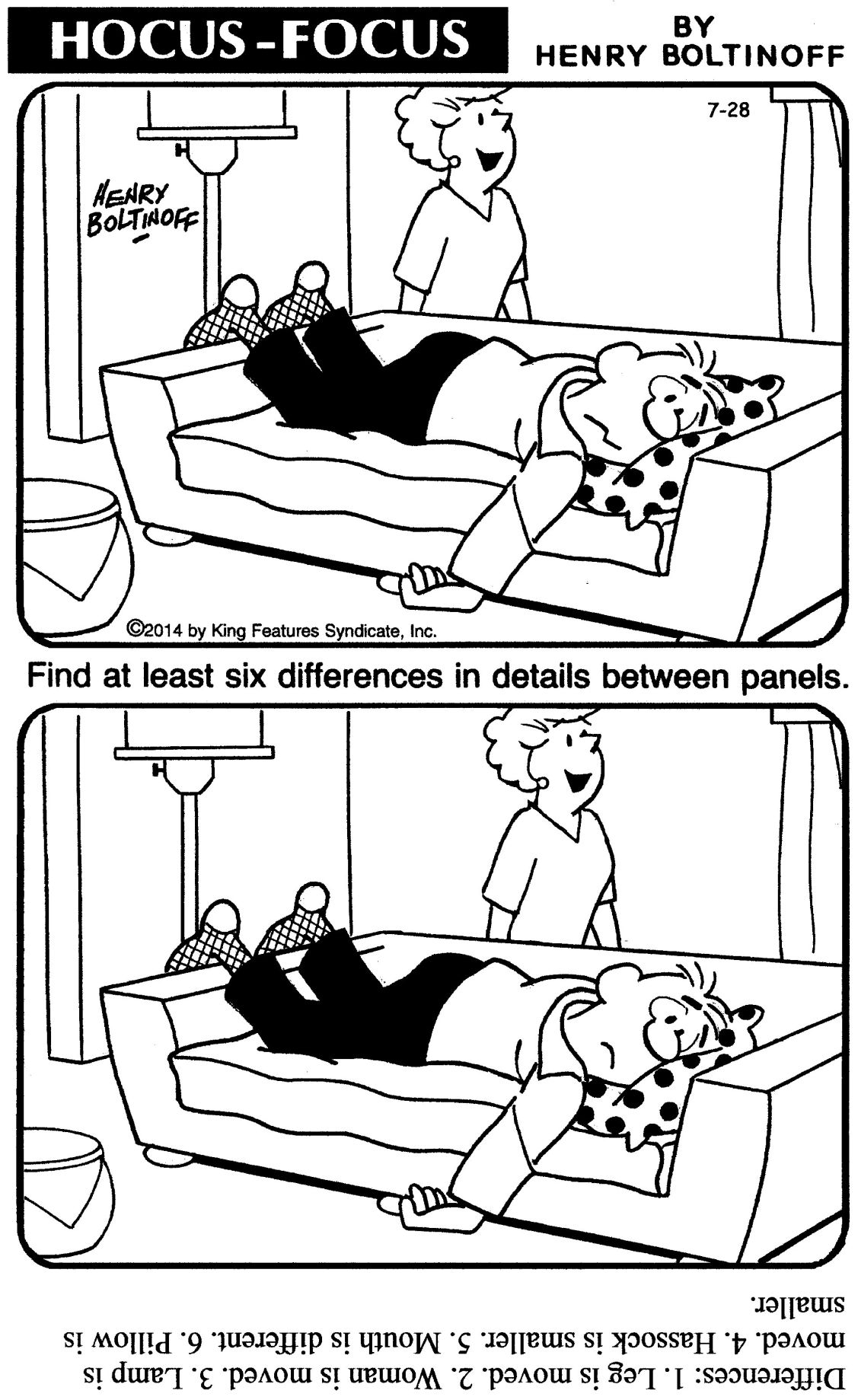
- HOCUS FOCUS SPOT THE DIFFERENCE MOVIE
- HOCUS FOCUS SPOT THE DIFFERENCE TRIAL
- HOCUS FOCUS SPOT THE DIFFERENCE SERIES
Other details we picked up were the eyes scattered across Winnie’s dress that match the eye on her book and Mary’s mouth switching sides once she is slapped. Or maybe they’ve always been there, but we couldn’t see the details on our CRT TVs. The sleeves of her revamped costume look like crotched spiderwebs, and even tiny spiders are scattered across her corset. This is a throwback to Sarah’s ( Sarah Jessica Parker) spider obsession in the first film and a character detail reflected in her new dress. It is Winnie’s 16th birthday, and Sarah gifts her a spider. The film opens with a flashback sequence, with the beloved sisters as children living in 1600s Salem, Massachusetts.
HOCUS FOCUS SPOT THE DIFFERENCE MOVIE
Haven’t seen it yet? Read our spoiler-free movie review here! Sarah’s Spider Obsession

SPOILER WARNING: The following list contains spoilers for Hocus Pocus 2. RELATED: NYCC 2022: Wednesday Panel Unveils Creepy Official Trailer and Casting News We can’t fit every Easter egg and throwback detail into this list, but here are a few you might have missed! With such a long lead-out between movies, the writers had ample time to put in more references than you could shake a broom at. Well, that and the studio releasing it on Disney Plus. Bette Midler, who plays Winifred Sanderson, made Hocus Pocus 2 possible. Though initially considered a box office flop, the 1993 film has become a beloved Halloween tradition for many, and a sequel has been highly anticipated by the fans, cast and crew.

The Sanderson sisters make their long-awaited return in the sequel to the cult classic Halloween movie Hocus Pocus.
HOCUS FOCUS SPOT THE DIFFERENCE TRIAL
e focus is on the scenes of the dark room in Twelfth Night and the mock trial in King Lear, two examples of the theatricalization of the search for proof closely interwoven with religious, medical and political discourses that circulated in early modern England.It’s been 29 years, right down to the day, but now the witches are back in Hocus Pocus 2. Considering these ndings, the article investigates the impact of early criminography on the representation of witchcraft, demonic possession due to bewitching and exorcism in Shakespeare's plays. Many books, pamphlets and narratives regarding these issues were published, satisfying popular curiosity and triggering dramatic creativity. Finding proof was complex, and this led to many doubts as to the genuineness of the phenomena and the reliability of justice.
HOCUS FOCUS SPOT THE DIFFERENCE SERIES
A series of acts were passed with the aim of reinforcing the law however, this did not mitigate the social alarm, but if anything, increased the number of denunciations, trials and convictions. It is also necessary to distinguish rigorously between the psychological explanations employed by participants and those used by the historian.īetween the late sixteenth and early seventeenth century, the crime of witchcraft was viewed with grave concern. Before drawing cross-cultural comparisons, historians should establish the difference between demonic possession and the effects of witchcraft in English Calvinist thought. When their work is used by historians, the original meaning tends to be obscured. The European term, "possession," has been applied by anthropologists to phenomena in diverse cultures. Historians of New England have fruitfully studied the local context of witchcraft accusations, but there has been less attention to the English religious background or the intellectual context, comparisons usually being drawn between the Salem events and European demonic outbreaks or African possession cults. Failing to follow the patterns of interaction seen in ordinary witchcraft cases, they were difficult to explain at the time and have puzzled historians ever since. Therefore, the events that began at Salem Village, Massachusetts Colony, in the 1690s, leading to accusations in several towns and the series of trials at Salem, are unique in the annals of Anglo-American law. Such cases rarely extended beyond a single family and one or two accused. They loom large in the historiography because some cases were publicized and disputed at the time. Accordingly, I trawled through the primary material to find out just how often the distinction arose, and what influence such discussion might have had, First two paragraphs follow below In England, accusations of witchcraft involving extreme psychological symptoms were rare, by comparison with those concerning physical illness. A quick search through the literature indicated that this was a general problem. The term "possession," as I had noticed in other works on Salem, was used as if there was no ontological or etiological difference from extreme forms of bewitchment.

This essay was provoked by my reading a excellent book on Salem by Bernard Rosenthal.


 0 kommentar(er)
0 kommentar(er)
